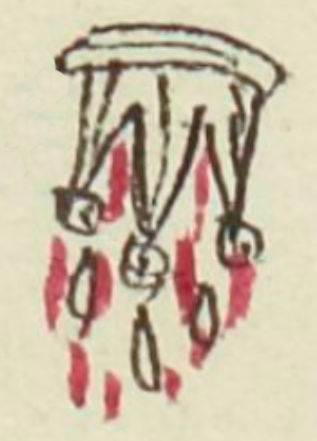Ezquiyauh (MH537v)
This black-line drawing--with added red coloring--of the compound glyph for the personal name Ezquiyauh (“It Has Rained Blood,” attested here as a man’s name) shows three streams of water joined at the top by something like a cap. Each stream has lines of current (showing movement) and droplets at their tips. The red color is added between and below the streams of water.
Stephanie Wood
There is more than one attestation of this name in the Matrícula de Huexotzinco, and so it might not be as unusual as it seems. Also, with depictions of blood letting, such as the iconographic example we have of tlacoquixtia from the Codex Telleriano-Remensis, the drops of blood resemble this rain. Furthermore, rain is a day sign in the divinatory calendar, the tonalpohualli, attesting to its religious significance.
Stephanie Wood
protos.ezquiyauh
Protos Ezquiyauh (is this really Piloto? or Brutus? or perhaps the Greek name for "First"?)
Stephanie Wood
1560
Jeff Haskett-Wood
bloody, sangre, ensangrentado, lluvia

ez(tli), blood, https://nahuatl.wired-humanities.org/content/eztli
quiyahui, to rain, https://nahuatl.wired-humanities.org/content/quiyahui
quiyahui(tl), rain, https://nahuatl.wired-humanities.org/content/quiyahuitl
La Lluvia Ensangrentada
Stephanie Wood
Matrícula de Huexotzinco, folio 537v, https://www.loc.gov/resource/gdcwdl.wdl_15282/?sp=154&st=image
This manuscript is hosted by the Library of Congress and the World Digital Library; used here with the Creative Commons, “Attribution-NonCommercial-ShareAlike 3.0 License” (CC-BY-NC-SAq 3.0).




